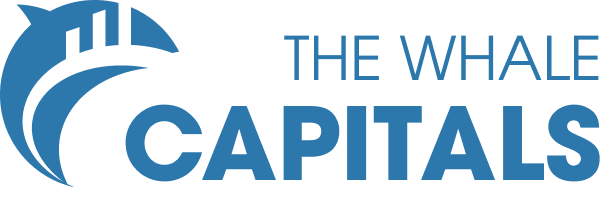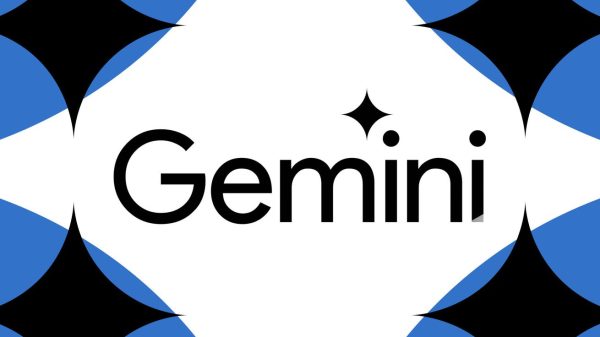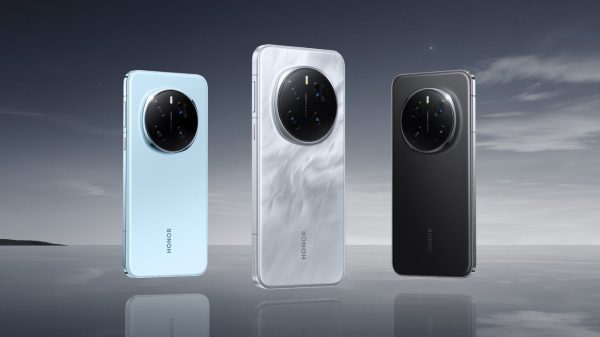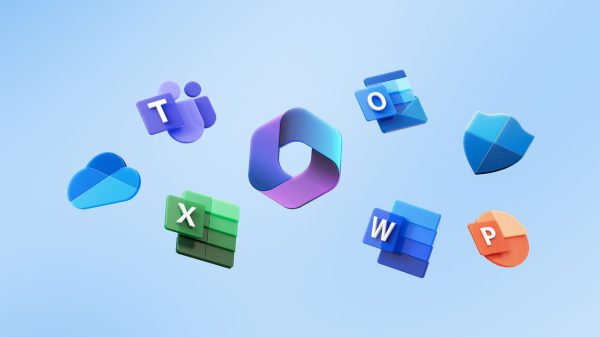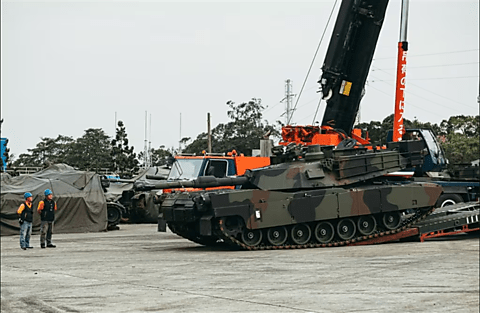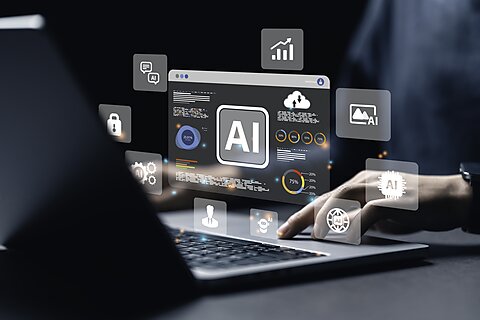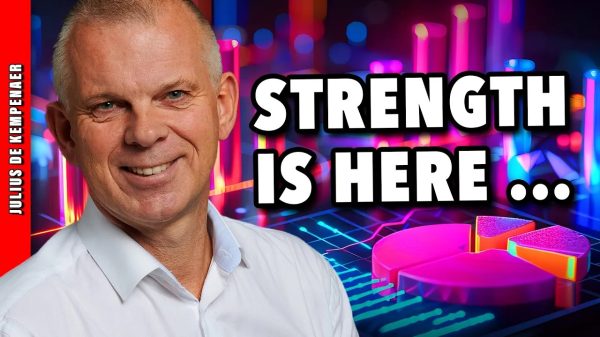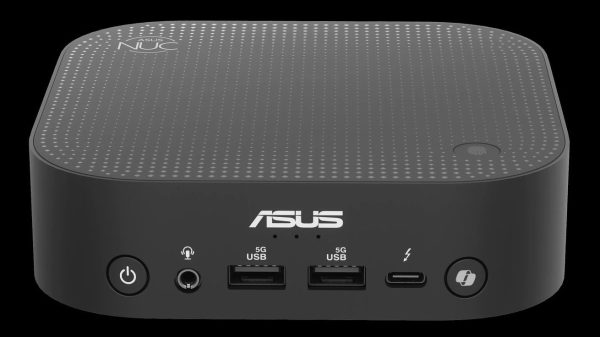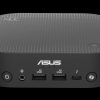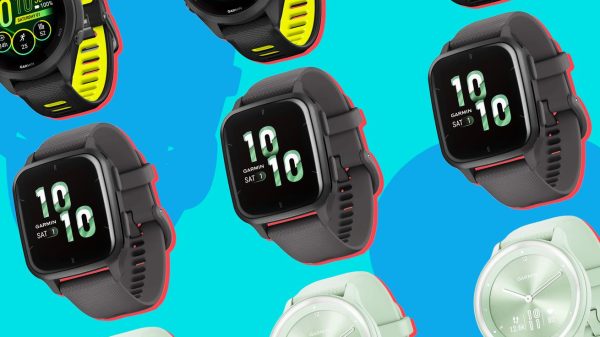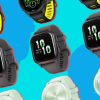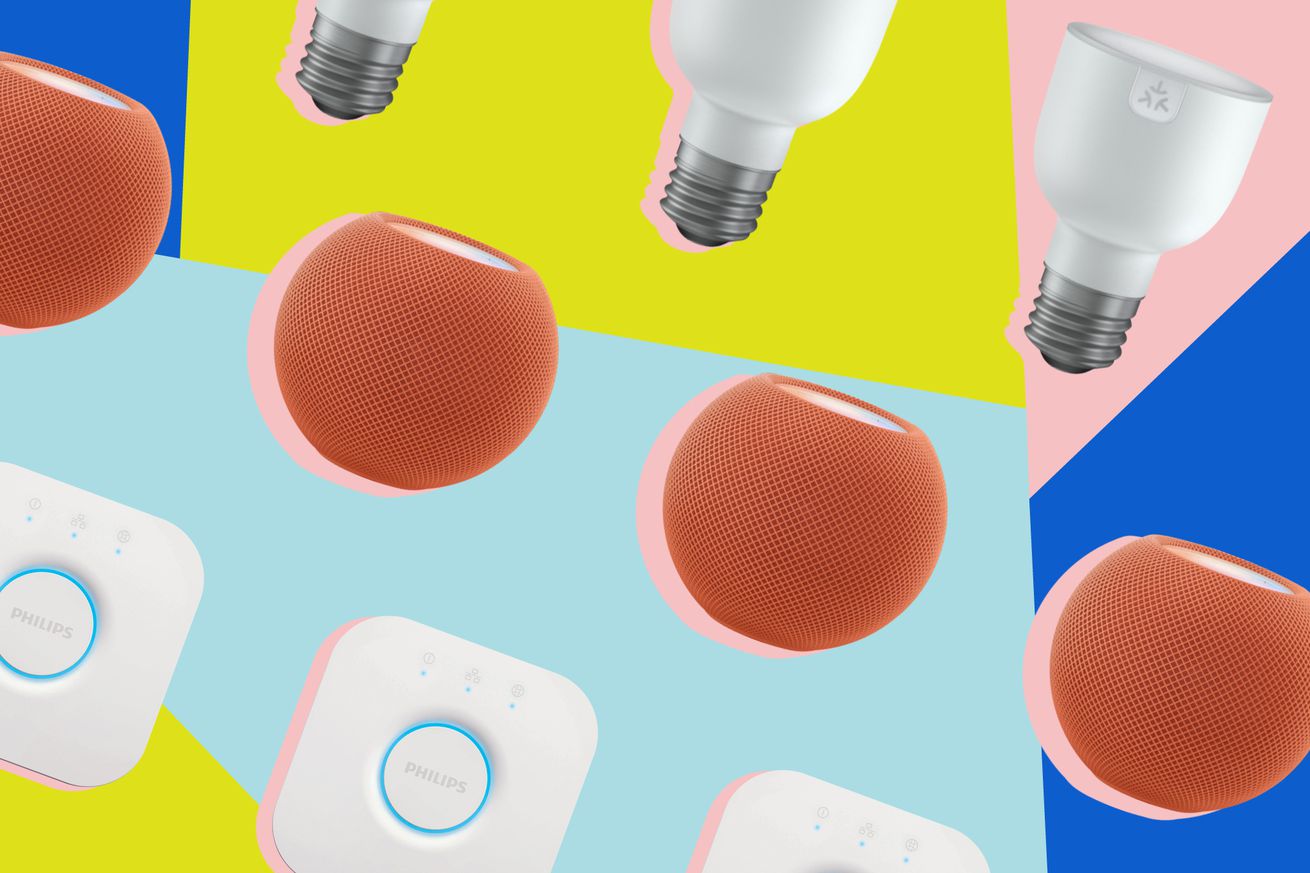
All the Matter-compatible devices you can buy, plus the latest on the smart home standard backed by Apple, Amazon, Google, and Samsung.
Two years after its launch, the Matter smart home standard is still plugging away at its mission to create a smart home that is easy to use, works with every ecosystem, and operates locally and securely in your home. Numerous products now work with Matter, which in many cases means it’s now easier to buy a connected gadget like a smart light or smart lock and get it set up in your home.
Matter is an industry standard developed by Apple, Google, Amazon, Samsung, and many others to enable easier, more secure, and more reliable communications between IoT devices. It also allows manufacturers to build to one standard — Matter, while still working within any ecosystem — including Apple Home, Google Home, Amazon Alexa, and Samsung SmartThings.
To help you navigate this brave new world, we’ve compiled a list of all the Matter-compatible products you can buy now, along with details on how they will work in your smart home and whether they work with Thread — one of the two main wireless protocols Matter runs on (the other being Wi-Fi).
We also have information on the smart home platforms that support Matter, which devices work with them, and what you need to get started. We’ll keep this article updated as new information comes out.
Which device types does Matter support?
Following the release of the newest Matter spec (1.4) in November 2024 by the Connectivity Standards Alliance (CSA, the organization that runs Matter), Matter now supports most of the common device types you might want to use in your smart home (with some notable exceptions, including security cameras and security systems).
Most gadgets can now theoretically work with the new standard — including lighting, locks, appliances, TVs, robot vacuums, routers, thermostats, and sensors. Additionally, energy management — a compelling reason to connect your devices if you want to reduce energy use and save money — is also now part of the standard.
However, just because you build it doesn’t mean they’ll come. While Matter provides the building blocks for a smarter home, as of December 2024, not all smart home manufacturers have added Matter support to their devices. Additionally, not all platforms support all the device types.
This can make getting set up with Matter confusing and is partly why Matter is still not ready to be the main way to connect all your devices in your smart home. But if you’re eager to get started with Matter and want to see some of the promised benefits — local control, improved device security, and being able to control your gadgets with any smart home platform you’d like — then read on for a list of every gadget you can buy today that works with Matter and what you need to get started.
/cdn.vox-cdn.com/uploads/chorus_asset/file/22982938/jtuohy_211102_4860_0030.jpg)
Photo by Jennifer Pattison Tuohy / The Verge
Getting started: Matter controllers
To use Matter devices, you will need a Matter controller from the smart home platform you plan to use. For example, an Apple HomePod or Apple TV for Apple Home, a Google Nest Hub for Google Home, a SmartThings hub for Samsung, an Amazon device for Alexa, etc.
Every major smart home platform has updated its existing hubs and smart speakers to make them Matter controllers. You’ll also need that platform’s smartphone or tablet app. These act as Matter commissioners and connect the Matter device to the Matter controller.
Some Matter controllers are also Thread border routers. You need a border router to add Thread devices to your home. (Apple users can use an iPhone with Thread in it to onboard Thread devices to their home network.)
If your Matter controller is not a Thread border router, you can add a Thread border router-capable device from any manufacturer to your network, and it should provide the connectivity you need — it doesn’t have to be from the platform you are using. (Multiple Thread border routers from different companies can cause some issues, so keep that in mind as you add devices to your home.)
List of Matter controllers
(These Matter controllers are all also Thread border routers unless indicated as Wi-Fi only)
- Apple HomePod (second-gen)
- Apple HomePod Mini
- Apple TV 4K Wi-Fi + Ethernet (2022 version)
- Apple TV 4K (2021 version)
- Apple HomePod (first-gen, Wi-Fi only)
- Apple TV 4K Wi-Fi (2022 version, Wi-Fi only)
Google Home
- Nest Hub (second-gen)
- Nest Hub Max
- Google TV Streamer 4K
- Google Nest Wifi Pro
- Google Nest Wifi Router / Point
- The following Google devices are Wi-Fi-only Matter controllers: Nest Audio, Nest Mini, Nest Hub (first-gen), Google Home (original smart speaker), Google Home Mini
Samsung SmartThings
- Aeotec SmartThings Smart Home Hub
- Samsung SmartThings Station
- Samsung SmartThings Hub Dongle
- Samsung SmartThings Hub v3
- Samsung Smart TVs (2023 and newer), Smart Monitor M80C (2023 and newer), and Q-Series Soundbars (2023 and newer)
- Samsung Bespoke Family Hub refrigerator (2023 and newer)
- The following Samsung devices are Wi-Fi-only Matter controllers: Samsung SmartThings Hub v2, Samsung Family Hub fridge (2017 and newer, can add Thread with a dongle), Samsung Smart Monitors 2022 models, Samsung smart TVs 2022 models, Samsung Music Frame
Amazon Alexa
- Echo Hub
- Echo (fourth-gen)
- Eero Pro 6E, Pro 6, 6 Plus, 6, PoE 6, and PoE Gateway
- Echo Show 8 (third-gen)
- Echo Show 15 (second-gen)
- Echo Show 21 (second-gen)
- Eero 6 devices and newer, including Eero Max 7
- The following Echo devices are Wi-Fi-only Matter controllers: Echo Dot and Echo Dot with Clock (third-gen and newer), Echo Pop, Echo Spot, Echo Studio, Echo Show 5, Echo Show 8 (second-gen), Echo Show 10 (third-gen), Echo Show 15, Echo Input, Flex, and Plus (v2)
Other platforms with Matter controllers
- Aqara Hub M3
- Nabu Casa Home Assistant Yellow
- Home Assistant Green with Home Assistant Connect ZBT-1 dongle
- Comcast xFi Advanced Gateway
- Hubitat Elevation Model C-8 hub
- Homey Pro hub (beta)
- HOOBS Pro (Thread / Matter update announced)
- LG ThinQ ON hub (announced)
- Flic Hub LR and Flic Hub Mini (Wi-Fi only)
- LG smart TVs (webOS 22 and 23, Wi-Fi only)
- Mui Board 2.0 (Wi-Fi only)
Which platforms support which device types?
Matter now supports over 40 device types — you can see a full list through Matter 1.3 here, and the new Matter 1.4 device types here. However, the Matter specification does not require that each platform support all device types. This means that while your smart air purifier may work through Matter with Amazon Alexa, it may not work with Google Home.
Here is a rundown of which platforms currently support which Matter devices:
Matter devices supported by Apple Home
Apple Home supports lighting devices, air conditioners (air purifiers and air quality monitors), buttons, bridges, locks, smart plugs / outlets, thermostats, blinds and shades, and sensors (motion, ambient light, contact, temperature, and humidity). The company has said it will add support for robot vacuums to Apple Home with iOS 18 in early 2025.
Matter devices supported by Amazon Alexa
Amazon Alexa supports lighting devices, smart plugs, door locks, bridges, blinds and shades, fans, sensors (including motion, contact, ambient light, humidity, and temperature), generic buttons and switches, room air conditioners, dishwashers, robotic vacuums, smoke and carbon monoxide alarms, air quality sensors, and air purifiers.
Matter devices supported by Google Home
Google Home supports all lighting devices, smart plugs, door locks, bridges, blinds, fans, thermostats, and sensors (including motion, contact, occupancy, ambient light, humidity, temperature, pressure, and flow).
Matter devices supported by Samsung SmartThings
Samsung SmartThings supports all Matter device types through Matter 1.3.
Matter device types supported by Home Assistant
Home Assistant supports all Matter device types through Matter 1.3.
All the smart home devices that work with Matter
What follows are lists of all the smart home devices we know of that currently work with Matter.
Most Matter-compatible products can be identified by a Matter logo on the packaging and a Matter QR code on the device itself. However, some older devices have been updated to Matter with over-the-air firmware updates. Others (such as Philips Hue lights) can be added to Matter through a proprietary hub or bridge.
/cdn.vox-cdn.com/uploads/chorus_asset/file/24710223/236692_Aqara_Door_Lock_JTuohy_0003.jpg)
Photo by Jennifer Pattison Tuohy / The Verge
Smart door locks
All the major platforms support smart door locks through Matter, but only a handful of locks currently work with Matter.
I’ve written more about how Matter works with smart locks here, but the biggest thing to know is that if you use a lock through Matter, the only guaranteed support is the ability to lock and unlock it. Features such as adding PINs and using auto-lock depend on the platform you are using. For example, Apple Home and SmartThings support PINs through Matter, but Google and Amazon Alexa don’t.
Recently, Apple added support for Home Key to Matter locks using its platform. However, this only works on locks that are NFC enabled and connect to Apple Home directly via Matter, not through a bridge or hub.
- Aqara Smart Lock U100 (with Aqara hub)
- Aqara Smart Lock U50 (with Aqara hub)
- Aqara Smart Lock U200 (Thread)
- Aqara Smart Lock U300 (Thread)
- Eufy Smart Lock E30 (Thread)
- Kwikset Halo Select (Thread)
- Level Lock Plus (Matter)
- SwitchBot Lock (with SwitchBot Hub)
- SwitchBot Lock Pro (with SwitchBot Hub)
- Yale Assure Lock SL (with Matter module)
- Nuki fourth-gen (Europe only)
/cdn.vox-cdn.com/uploads/chorus_asset/file/25560744/247209_Google_Nest_Hardware_OGrove_0013.jpg)
Photo by Owen Grove / The Verge
Smart thermostats, heating and cooling / air purifying equipment
Matter 1.4 added support for scheduling and preset modes like vacation and home / away settings, in addition to temperature adjustment and mode changes. However, there are only three thermostats that support Matter in the US: Google’s Nest Thermostat (2020), its Nest Learning Thermostat (4th gen), and the Meross Matter Smart Thermostat.
Smart thermostat company Ecobee has said it’s committed to Matter but hasn’t shared a timeline for when its thermostats will support the standard. There are a few other climate control devices designed for European heating systems that work with Matter.
- Aqara Radiator Thermostat E1 (through Aqara hub)
- Bosch Radiator Thermostat II (Thread, UK and EU)
- Big Ass Fans (OTA update for select Haiku models)
- Eve Thermo (Thread)
- Google Nest Thermostat
- Google Nest Learning Thermostat (4th gen)
- GoveeLife Smart Tower Fan 2 Max
- Meross Matter Smart Thermostat
- Midea U window air conditioning unit
- SwitchBot Battery Circulator Fan (through SwitchBot Hub)
- SwitchBot Evaporative Humidifier (through SwitchBot Hub)
- Tado X (UK and EU only)
Air purifiers
Air purifiers arrived with Matter 1.2 and are now supported by all platforms except Google Home.
- Ikea Starkvind air purifier (through Dirigera bridge)
- Midea 2-in-1 fan / heater air purifier
- Welov Air Purifier P200 (AiDot)
/cdn.vox-cdn.com/uploads/chorus_asset/file/25406962/247088_Roborock_vs_DreameBot_JTuohy_0010.jpg)
Photo by Jennifer Pattison Tuohy / The Verge
Robot vacuums
For robot vacuums, the Matter spec supports functions including remote start and progress notifications, switching cleaning modes (i.e., from dry vacuum to wet mopping), and status details such as brush and charging status and error reporting.
Matter does not support room mapping, so you will still need to use the manufacturer’s app for that. However, based on Apple’s plans to implement robovac support in Matter, it appears you can control room-specific cleaning through Matter.
Samsung SmartThings and Amazon Alexa currently support robot vacuums, and Apple has said support will come early next year. However, no robot vacuums have Matter support fully enabled. Most on this list have said it will be available on these models via an OTA upgrade later this year.
- Ecovacs Deebot X2 Combo
- Dreame X40 Ultra
- Roborock S8 MaxV Ultra
- Roomba Combo 10 Max
- SwitchBot K10 Plus, K10 Plus Pro, and S10
Read more about Matter support for robot vacuums in my robot vacuum buying guide.
Home appliances
Fridges / freezers, dishwashers, washers, dryers, microwaves, and ovens are all supported Matter device types, but so far, actual on-sale appliances with Matter support are few and far between.
Manufacturers Whirlpool (which owns KitchenAid and Maytag), Bosch, Midea, Hisense, Toshiba, LG, Samsung, and Haier (which owns GE Appliances) are all members of Matter. But only Midea and Bosch have implemented the standard.
Midea has added it to a dishwasher and microwave, neither of which you can buy yet. Bosch has Matter in its Siemens / Bosch XXL built-in fridge freezer and its Bosch 100 Series French Door fridge, but the update won’t be live until March 2025.
Some Samsung refrigerators and TVs are Matter controllers but not Matter devices . Notably, Samsung has not committed to making any of its appliances Matter devices.
Televisions and media streaming devices
Several TV manufacturers, including TCL, Hisense, Toshiba, and Universal Electronics have said their products will support Matter. LG and Samsung have enabled their newer TVs as Matter controllers, but not Matter devices.
As a Matter-enabled device, a TV should be controllable through your smart home app, including adjusting volume, changing inputs, powering on and off, and changing channels.
Amazon has added Matter support to its Fire TVs and Fire Sticks (running Fire OS 7 or higher), which enables Matter Casting. This feature of Matter lets you cast content from an app on your phone to an app on a TV or display. So far, only Amazon supports Matter Casting, and only for Prime Video.
In Matter 1.4, the CSA has added set-top boxes as a type that could be Matter-certified if the device includes a Wi-Fi access point, a Thread border router, and Matter-specific software functions. We’ve yet to see any companies release a device like this.
Smart shades, blinds, and shutters
Controlling shades is fairly simple: they can be up or down, open or closed, or partly open. Matter support is available for all those features, plus tilting for blinds, so if you are looking for smart shades, those with Matter support will work as expected with all the big platforms.
- Aqara Roller Shade Driver E1 (through Aqara hub)
- Aqara Curtain Driver E1 (through Aqara hub)
- Aqara Roller Shade Controller (through Aqara hub)
- Eve MotionBlinds (Thread)
- Eve MotionBlinds Upgrade Kit (Thread)
- Ikea smart blinds (through Dirigera bridge)
- SwitchBot Curtain Motor (through SwitchBot Hub 2)
- SwitchBot Blind Tilt (through SwitchBot Hub 2)
- SmartWings (Thread)
- Zemismart Roller Shade Motor (Thread)
- Zemismart Curtain Motor (Thread)
/cdn.vox-cdn.com/uploads/chorus_asset/file/24997174/1015081_1258_CONO_LAMP_SERRIA_I04.jpg)
Image: Nanoleaf
Smart lighting
There are many smart lighting options available in Matter, from bulbs, switches, and smart plugs to a lamp or two and a couple of outlets. If you want to control your smart lights with basic on / off, dimming, and color control, then any of the options below will work well for you.
The benefit of Matter here is that the lights will connect directly to your platform of choice without needing a third-party app and will work locally in your home without relying on the cloud for commands, meaning they should respond more quickly and reliably.
However, if you want to take advantage of additional features offered by some smart lighting companies (Philips Hue, Wiz, and Nanoleaf, for example), you’ll need their apps to control those. This includes dynamic lighting scenes, security lighting, or circadian rhythm lighting.
With iOS 18, Apple’s Adaptive Lighting feature now works with Matter smart lights (as long as the lights have enabled the feature). This currently includes Nanoleaf, Aqara, and Philips Hue.
Smart bulbs and lights
- All Aqara lighting bridged through an Aqara hub (including Aqara T1 LED light strip and Aqara T1M Ceiling Light)
- Govee LED Strip Light M1
- Govee String Lights 2
- Govee Icicle Lights
- Govee Permanent Outdoor Lights Pro
- Govee Neon Rope Light 2
- Govee Lamp 2
- Govee Outdoor Wall Lights
- Govee Triad Flood Lights
- Govee TV Backlight 3 Lite and Govee AI Sync Box Kit 2
- GE Lighting Cync HD Plus Undercabinet Lighting
- Ikea smart lighting (through Dirigera bridge)
- Lifx Super Color Floodlight (PAR38)
- Lifx Outdoor Lights
- Lifx Outdoor Permanent Lights
- Lifx T10 Opal Frosted Glass Tube
- Lifx B10 Polychrome Candle
- Lifx Super Color A21 Bulb
- Lifx Super Color Ceiling Light
- Linkind A19 light bulbs
- Nanoleaf Matter Essentials A19 light bulb (Thread)
- Nanoleaf Matter Essentials Light Strip (Thread)
- Nanoleaf Matter Essentials BR30 light bulb (Thread)
- Nanoleaf Matter Essentials GU10 light bulb (Thread)
- Nanoleaf Matter Essentials downlight (Thread)
- Nanoleaf Matter Essentials String Lights (Wi-Fi)
- Nanoleaf Matter Essentials Outdoor String Lights
- Nanoleaf Smart Multicolor Permanent Outdoor Lights (Wi-Fi)
- Nanoleaf x Umbra Cono lamp (Thread)
- Nanoleaf x Umbra Cup lamp (Thread)
- OREiN Matter smart A19 light bulbs
- Sengled Wi-Fi A19 bulb
- SwitchBot A19 Color bulb (through SwitchBot Hub)
- All Wiz lighting products manufactured since Q2 2021
- Yeelight Fun Cube Smart Lamp
- Yeelight Pro smart lighting series
- Zemismart WiFi Matter LED Recessed light
- Zemismart WiFi Matter Smart Light Switch breaker module
- Zemismart WiFi Matter RGB E27 light bulb
Smart switches and buttons
- Aqara switches and buttons (through an Aqara hub)
- Arre Smart Button (Thread, formerly Tuo)
- Flic Hub and Flic Button / Twist (beta)
- Ikea’s Styrbar, Somrig, Rodret, Symfonisk remotes (through Dirigera bridge)
- Kasa Matter Smart Light Switch
- Leviton Decora D215S Wi-Fi smart switch
- Linkind Matter Smart Switch (Wi-Fi)
- Shelly Plus and Pro devices
- SwitchBot Bot (through SwitchBot Hub)
- SwitchBot Hub 2
- SwitchBot Universal Remote (through SwitchBot Hub)
- Tapo Smart Wi-Fi Light Switch
- Zemismart Wi-Fi Switch (push button or Decora-style)
Smart dimmer switches
- Inovelli White Series Smart Dimmer (Thread)
- Leviton Decora Smart Wi-Fi ELV/LED Phase-Selectable Dimmer
- Leviton Decora D26HD Wi-Fi smart dimmer
- Nanoleaf Sense Plus Smart Wireless Switch (Thread, preorder)
- Kasa Matter Smart Dimmer Switch
- Tapo Smart Wi-Fi Dimmer Switch
- Orvibo Matter Dimmer Switch with Remote (Wi-Fi)
- Kasa Matter Smart Dimmer Switch
Smart plugs and outlets
Several smart plugs work with Matter (over Thread or Wi-Fi). Matter supports basic on / off functionality. While the Matter spec now supports energy monitoring, only SmartThings and Home Assistant have implemented it. If you use a different platform, you will need to access energy monitoring features through the smart plug app (e.g., Eve Energy and the Eve app).
- Aqara smart plugs (through Aqara bridge)
- Aqara EU-Style wall outlet (through Aqara bridge)
- Aqara Dual Relay Module T2 (through Aqara bridge)
- EcoFlow Smart Plug (EU / UK)
- Eve Energy smart plug (Thread)
- Eve Energy Outlet (Thread)
- GE Lighting Cync Indoor Plug
- Govee Smart Plug Pro
- Ikea Tretakt smart plug (through Dirigera bridge)
- Leviton Decora D215P Wi-Fi smart plug
- Leviton Decora D23LP Wi-Fi plug-in dimmer
- Leviton’s Decora Smart Outdoor Plug
- Linkind Matter Smart Plug (Wi-Fi)
- Meross Matter Smart Wi-Fi Plug Mini (EU and US)
- Meross Matter Smart Wi-Fi Plug with Energy Monitor (EU and UK)
- Onvis Matter Smart Plug (EU and US, Thread)
- Tapo TP15 Mini Smart Wi-Fi Plug
- Tapo P100M smart plug (EU)
- Tapo P210M smart in-wall outlet
- Tapo P400M outdoor smart plug
/cdn.vox-cdn.com/uploads/chorus_asset/file/23921610/jtuohy_220801_226099_0004.jpg)
Photo by Jennifer Pattison Tuohy / The Verge
Smart sensors
Sensors have some of the most robust support of any device type, with support in Matter for occupancy, open / close, light, temperature and humidity, and pressure and flow sensing for water leak detectors. Support for more advanced presence sensing technologies such as mmWave and vision (through a camera) arrived with 1.4. Sensors are also getting more customizable sensitivity settings and history reporting.
- Aqara Door and Window Sensor P2 (contact sensor)
- Aqara Motion and Light Sensor P2 (Thread)
- Aqara FP1E (presence sensor, Zigbee hub)
- Aqara FP2 (presence sensor, Wi-Fi)
- Aqara sensors bridged through an Aqara hub
- Arre contact sensor (Thread, formerly Tuo)
- Arre temperature sensor
- Eve Motion motion sensor
- Eve Door & Window contact sensor
- Eve Weather temperature sensor
- Ikea’s Badring water leak sensor (through Dirigera bridge)
- Ikea’s Parasoll contact sensors (through Dirigera bridge)
- Ikea’s Vallhorn motion sensor (through Dirigera bridge)
- Ikea’s Vindstyrka air quality sensor (through Dirigera bridge)
- Meross MS600 Presence Sensor
- Meross Matter Smart Temperature and Humidity Sensor MS130
- Shelly H&T Gen 3 climate sensor
- SwitchBot contact sensor (through SwitchBot Hub)
- SwitchBot motion sensor (through SwitchBot Hub)
/cdn.vox-cdn.com/uploads/chorus_asset/file/24957951/236815_Philips_Hue_Bridge_JTuohy_0001.jpg)
Photo by Jennifer Pattison Tuohy / The Verge
Bridges that support Matter
Smart home devices that use a proprietary bridge — such as Philips Hue smart bulbs, Aqara sensors, or a SwitchBot door lock — can be “bridged” into Matter to control their connected devices in a Matter smart home platform. If you have devices that work through a bridge and that bridge has been updated to Matter, the devices connected to it will work in a Matter platform.
However, some features specific to the manufacturer’s app, such as dynamic lighting or precise sensor settings, may not be available on the Matter platform. Additionally, some Matter-specific features, such as Apple’s Home Key for Matter locks, won’t work with devices that have been bridged to Matter.
- Philips Hue Bridge
- Aqara Hub M2 (OTA update)
- Aqara Hub M1S Gen 2 (OTA update)
- Aqara Hub E1 (OTA update)
- Aqara Hub M3
- Aqara Camera Hub G3 (OTA update)
- Ikea Dirigera hub
- SwitchBot Hub 2
- Switchbot Hub Mini Matter Enabled
- Zemismart M1 Hub
/cdn.vox-cdn.com/uploads/chorus_asset/file/24202196/226408_Google_Nest_Wifi_Pro_JTuohy_0001.jpg)
Photo by Jennifer Pattison Tuohy / The Verge
Wi-Fi routers in Matter
With 1.4, Matter added official support for Wi-Fi routers, modems, access points, and set-top boxes, known collectively as HRAP (Home Routers and Access Points).
To be Matter-certified, an HRAP device needs to be both a Wi-Fi access point and a Thread border router. It also needs to run specific Matter software that supports storing and sharing Thread network credentials and provides other infrastructure support for Matter in your home.
Importantly, HRAP devices don’t have to be Matter controllers (although they can be), so they can be a platform-agnostic piece of Matter infrastructure in your home. This means all you would need in addition would be a Matter controller from your platform of choice, and you’d have all you need to start building a Matter smart home.
Comcast, a major player in developing Matter, made its xFi gateway Matter-compatible, but it doesn’t have Thread and doesn’t currently work with any smart home platforms. With the arrival of 1.4, there could be some movement here, potentially from companies like AT&T, Verizon, and others.
Currently, Google Nest’s Wi-Fi routers are Thread-enabled Matter controllers for Google Home, and Amazon (which owns Eero) has added Matter controller support to its Eero 6 devices and newer. Whether either company will adopt the new HRAP spec on its routers remains to be seen, but if you use Alexa or Google Home, their respective router is a great foundation for a Matter setup.
Ultimately, a future where all Wi-Fi routers have Thread and Matter built-in could finally make setting up a smart home easy. What would make it even easier is if these new HRAP devices could also be Matter controllers for any platform, but that’s probably asking too much.
Update, December 10th, 2024: Streamlined the explanation section of the article, added a section outlining which platforms support which device types, included newly announced products, and made updates throughout.
